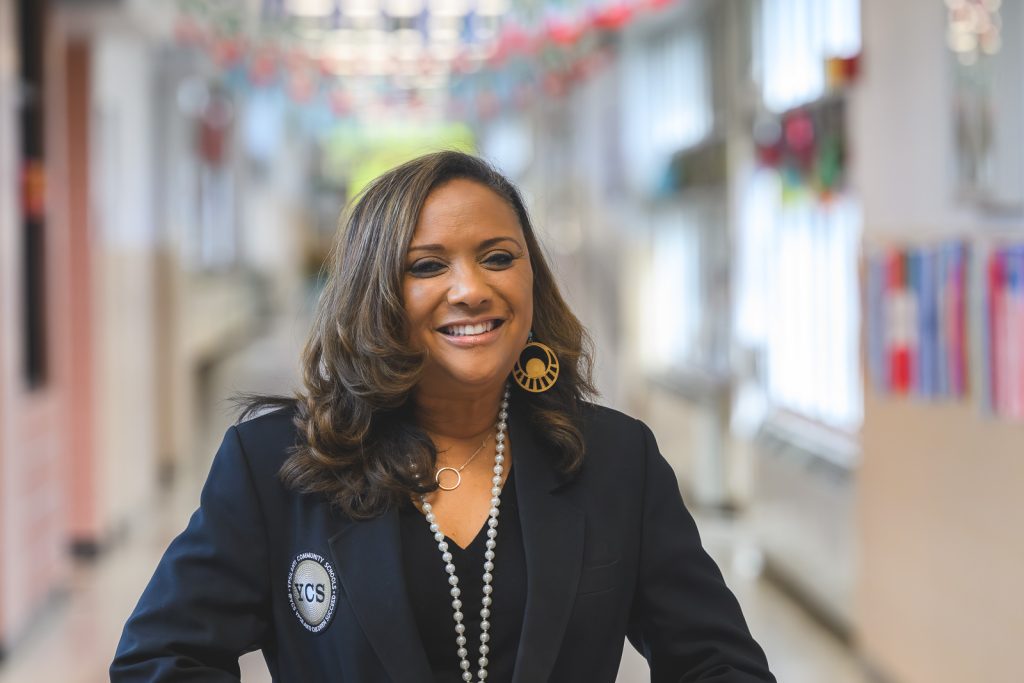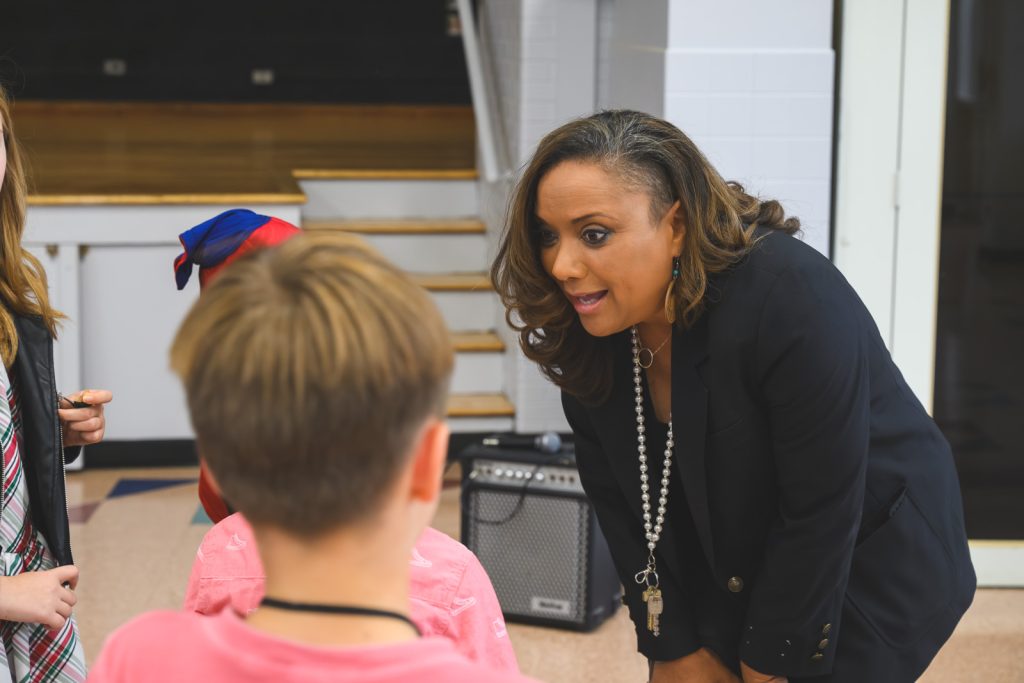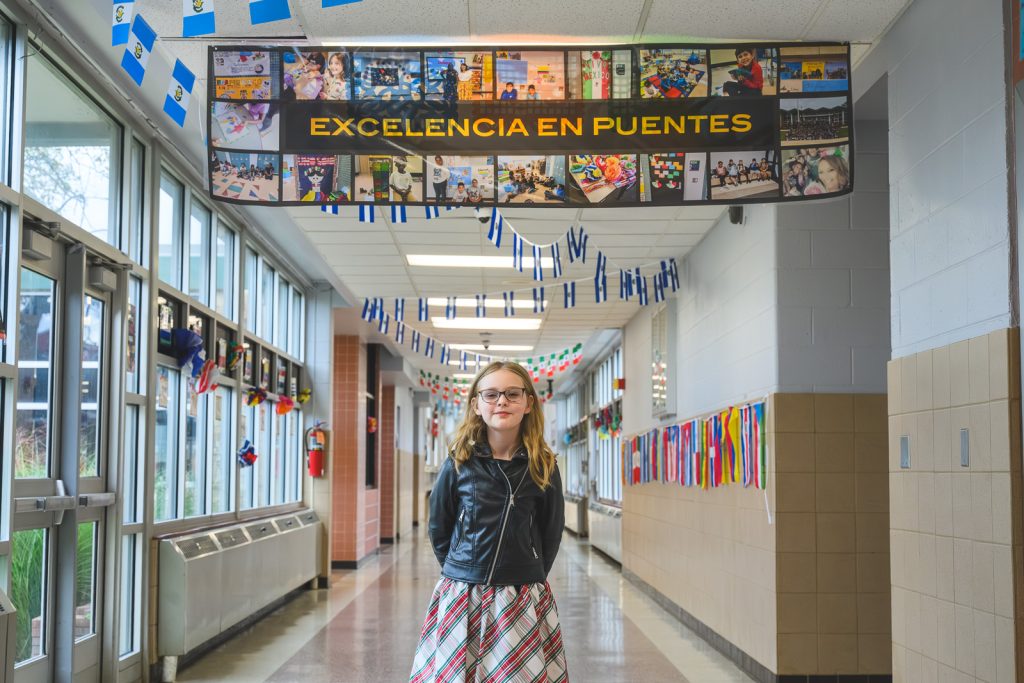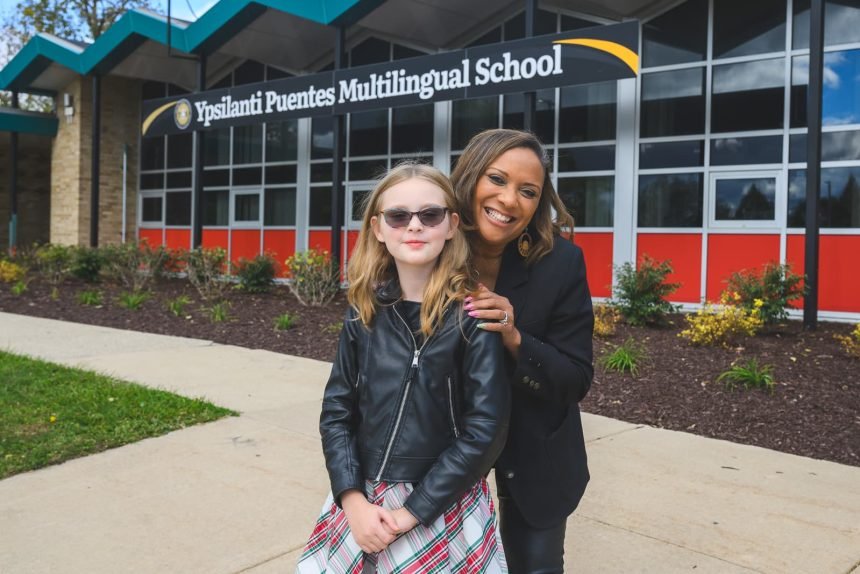Nora McDonald, a third-grade student at Ypsilanti Puentes Multilingual School, is from a family that only spoke to her in English when she was a toddler. But she’s been enrolled in a Spanish-English dual-language immersion program in the Ypsilanti Community Schools (YCS) for so long that she doesn’t remember a time she didn’t speak both English and Spanish.
Meanwhile, her similarly bilingual classmate, third-grader Theo Moncada, celebrates his father’s family’s Honduran culture at school. He proudly wears a shirt embroidered with the word “Honduras” and recites facts about the country that he’s learned for Hispanic Heritage Month. Those include the fact that there are real, wild jaguars living in Honduras, as well as the background of a Honduran stuffed flatbread called a pupusa.
“The pupusa came from El Salvador, but the recipe stayed in Honduras, and for some reason, Honduras perfected it,” Moncada says.
McDonald and Moncada have both been involved in the district’s dual-language immersion program since it began in 2021 with just one kindergarten classroom at Ford STEAM Early Learning Center in Ypsilanti Township. Each year, the program has expanded to include the next grade level, and now about 125 young pupils are participating in the multilingual immersion curriculum.
Earlier this year, YCS administrators determined that the successful program deserved to become a school unto itself. Puentes Multilingual School is now located at 510 Emerick St. in Ypsi, in the building that housed Ypsilanti Community Middle School for several years before the school moved to its current location at 235 Spencer Lane. The school serves students in kindergarten through fourth grade.

Celeste Green, who has worked as a contractor providing Spanish language instruction at YCS since 2004, was named principal of the new school. Green says she had many discussions with Carlos Lopez, YCS’ assistant superintendent, about how their high schoolers could distinguish themselves with “high levels of bilingualism,” and those conversations contributed to the formation of the new school as well.
“Being a senior with an intermediate-high level of bilingualism is an extremely valuable asset to have when you graduate, whether you’re going to college or becoming an entrepreneur or going into the workforce,” Green says.
Lopez notes that Puentes is the first new school YCS has opened since a multi-district consolidation in 2013.
He says the new school was opened due to community input asking for a full dual-language immersion school. Community members also suggested the word “puentes,” which means “bridges” in Spanish, be part of the name.
Lopez says YCS administrators want to position Ypsilanti as a sought-after alternative for parents who can go elsewhere under the schools of choice system, and he thinks the multilingual program will contribute to that goal. He says YCS has hired “top-notch teachers who are not just teaching Spanish language, but also culture” — including a 2024 “commendable teacher of the year” award recipient.
The program starts out with kindergarten classes being taught 90% in Spanish and 10% in English. The percentage of Spanish increases each year, until it’s 50% Spanish/50% English by fourth grade.

Green says you might expect children who have only spoken English their whole lives to be nonplussed by being immersed in a classroom where the teacher is only speaking in Spanish on their first day. But children learn from context, as the teacher introduces herself and points to various objects, naming them in Spanish.
Green says the committee that ultimately recommended implementing the new multilingual school “saw the magic” of 5-year-olds walking into a classroom in September, never having heard Spanish in their lives, and being able to read in Spanish by November.
McDonald says her parents have told her that she struggled in her all-English “young fives” program because it was “too easy.”
“So they gave me a challenge by putting me in a Spanish school,” she says. Her future plans include traveling to a Spanish-speaking country to try out her Spanish fluency, as well as an even more ambitious goal.
“I have plans to marry someone from a Spanish-speaking culture and move to their country,” she says.

McDonald isn’t alone in needing a challenge, Green says.
“A lot of students came in and this was something that brought out their brilliance,” Green says. “Maybe before there was some behavior issue because they were bored, but now they walk in the door … and you are immediately challenged to absorb another language.”
Lopez says he’s excited that the multilingual immersion program will provide a unique skill that will be in demand now and in the near future.
Green says her students’ parents tend to be Spanish speakers who want to make sure their children don’t lose their culture and English speakers who want to make sure their children are prepared for a global workforce.
“Mainly it’s people who recognize that being bilingual is a gift. It’s an asset to have two languages,” Green says. “Those people know that this world is smaller than it’s ever been. There’s a bigger population but we come in contact with so many people from so many places.”











